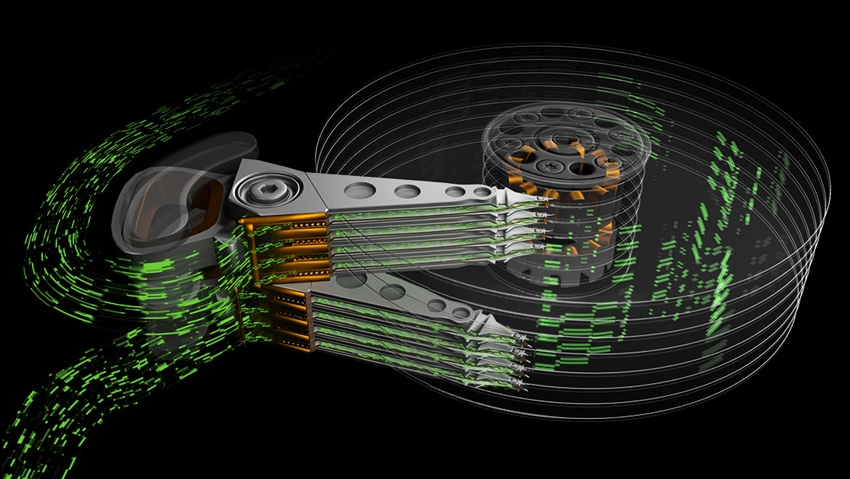![]() Seagate has a new HDD that leverages its MACH.2 multi-actuator technology, the Exos 2X14. While the technology was announced two years ago with the promise of doubling throughput, Seagate, along with its customer Microsoft, are able to show results of the technology and its performance breakthroughs. The technology is beneficial to applications such as content delivery networks (CDNs), video streaming, mail servers, backup/shuttle services, Hadoop, and cloud applications and is being tested for data center deployment now.
Seagate has a new HDD that leverages its MACH.2 multi-actuator technology, the Exos 2X14. While the technology was announced two years ago with the promise of doubling throughput, Seagate, along with its customer Microsoft, are able to show results of the technology and its performance breakthroughs. The technology is beneficial to applications such as content delivery networks (CDNs), video streaming, mail servers, backup/shuttle services, Hadoop, and cloud applications and is being tested for data center deployment now.
Seagate has a new HDD that leverages its MACH.2 multi-actuator technology, the Exos 2X14. While the technology was announced two years ago with the promise of doubling throughput, Seagate, along with its customer Microsoft, are able to show results of the technology and its performance breakthroughs. The technology is beneficial to applications such as content delivery networks (CDNs), video streaming, mail servers, backup/shuttle services, Hadoop, and cloud applications and is being tested for data center deployment now.

As we said at the initial announcement, Seagate’s solution to this is simple enough; if the number of actuators limit performance, add more. For its first generation of the new product, Seagate will be adding one actuator for two total on a single pivot point. According to the company, half the drive’s recording heads will operate together as a unit, while the other half will operate independently as a separate unit. This enables a hard drive to double its performance while maintaining the same capacity as that of a single actuator drive.
The MACH.2 technology should also prevent something referred to as stranded capacity. In a nutshell, the capacity of HDDs is increasing faster than the drives ability to transfer the data. The workaround has been to put less data on the drives to hit the maximum throughputs, thus “stranding” capacity. MACH.2 can solve this issue. An example that Seagate stated was a data center can install a 14TB dual-actuator drive in each slot. To the application, it looks very similar to the high throughput provided by two 7TB drives — but it fits into a single slot.
Microsoft has been a close collaborative partner during the development of MACH.2 multi-actuator technology. Microsoft’s main goal is to leverage the technology to maintain the IOPS required for some of Microsoft’s cloud services including Azure and the Microsoft Exchange Online email service, while increasing available storage capacity per data-center slot. Microsoft stated that it has completed its initial round of testing that included a functional deployment testing of the Exos 2X14, including full infrastructure testing for interoperability and compatibility with the data center infrastructure, product robustness, reliability and ease of integration with its Project Olympus system architecture — as well as the tests on the performance increase MACH.2 provides. Microsoft used its Microsoft Exchange Server Jetstress tool, which simulates Exchange 2013 and Exchange 2016 disk I/O load on a server to verify the performance and stability of a disk subsystem. Microsoft saw that they were getting close to twice the throughput and IOPS with the new technology.
Seagate also believes that MACH.2 can solve issues like IOPS/TB and cost/TB. The technology will allow for twice the throughput and IOPS at higher capacities than other HDDs while taking up the same footprint. If the use cases line up right and the price is right, this can be used as a potential SSD alternative for cloud customers.
Seagate MACH.2 multi-actuator technology
Sign up for the StorageReview newsletter

